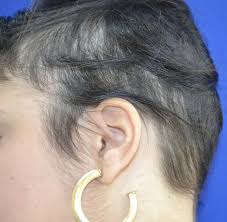
Breaking News
 Selling Us Rope: Palantir Is Raking In Billions From Washington
Selling Us Rope: Palantir Is Raking In Billions From Washington
 Tyson Foods Confirms Protein Switching Underway Amid Record High Beef Prices
Tyson Foods Confirms Protein Switching Underway Amid Record High Beef Prices
 Holy SH*T! Sex Offender Can't Adopt Kids--So He Bought One Instead? | Redacted w Clayton Morris
Holy SH*T! Sex Offender Can't Adopt Kids--So He Bought One Instead? | Redacted w Clayton Morris
Top Tech News
 'Robot skin' beats human reflexes, transforms grip with fabric-powered touch
'Robot skin' beats human reflexes, transforms grip with fabric-powered touch
 World's first nuclear fusion plant being built in US to power Microsoft data centers
World's first nuclear fusion plant being built in US to power Microsoft data centers
 The mitochondria are more than just the "powerhouse of the cell" – they initiate immune...
The mitochondria are more than just the "powerhouse of the cell" – they initiate immune...
 Historic Aviation Engine Advance to Unlock Hypersonic Mach 10 Planes
Historic Aviation Engine Advance to Unlock Hypersonic Mach 10 Planes
 OpenAI CEO Sam Altman Pitches Eyeball-Scanning World ID to Bankers
OpenAI CEO Sam Altman Pitches Eyeball-Scanning World ID to Bankers
 New 3D-printed titanium alloy is stronger and cheaper than ever before
New 3D-printed titanium alloy is stronger and cheaper than ever before
 What is Unitree's new $6,000 humanoid robot good for?
What is Unitree's new $6,000 humanoid robot good for?
 "No CGI, No AI, Pure Engineering": Watch Raw Footage Of 'Star Wars'-Style Speeder
"No CGI, No AI, Pure Engineering": Watch Raw Footage Of 'Star Wars'-Style Speeder
 NASA's X-59 'quiet' supersonic jet rolls out for its 1st test drive (video)
NASA's X-59 'quiet' supersonic jet rolls out for its 1st test drive (video)
 Hypersonic SABRE engine reignited in Invictus Mach 5 spaceplane
Hypersonic SABRE engine reignited in Invictus Mach 5 spaceplane
Incredible before and after pictures reveal staggering transformation of 13-year-old...

A 13-year-old girl who was left completely bald from her alopecia has made an incredible transformation after taking an arthritis drug.
The unidentified teenager, from Brazil, had slowly been losing her hair for five years and standard medications failed to help. Doctors tried tofacitinib as a last-resort.
Tests of the drug, marketed as Xeljanz, have shown it can help alopecia patients regrow their hair – but it is not yet licensed as a conventional treatment.
After just four months, the girl regained a significant amount of her hair. She was left with thick, brown locks within two years of taking tofacitinib.
The results add to the evidence that the drug could offer hope for millions of patients around the world with alopecia, who have slim chances of making a full recovery.
Tofacitinib is routinely given to patient with rheumatoid arthritis, which is caused by inflammation. Dermatologists say the type of alopecia the girl had is caused by the same process.
Medical student Rachel Berbert Ferreira, at Centro Universitario Cesumar, was the senior author of the paper in Clinical Case Reports.



